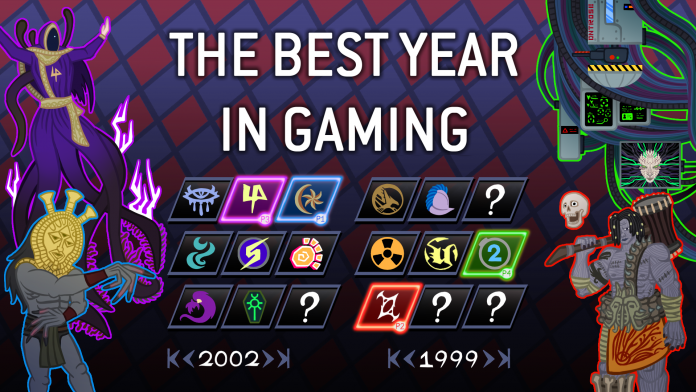Last year’s stacked lineup of games for the Game Awards had us thinking: What was the best year in gaming? As part of our series on determining gaming’s best year, we’re putting together an article on each year, charting the major releases and developments of the year, and talking about both their impact and what made them great.

The Year: 1997
Welcome to 1997. The Nintendo 64 is about to have a breakout year, redefining the first-person shooter with one of the best couch multiplayer games of all time. None of it will matter, however, as Squaresoft is about to reveal the reason it left Nintendo behind for the Sony PlayStation. On PC, Blizzard is about to completely change the game when it comes to multiplayer play with Battle.net and its action RPG, while Interplay Entertainment is about to introduce the world to the western computer RPG.
By this point the third era of arcades in the United States was ending. Street Fighter and Mortal Kombat had come and gone, and while there were still some solid games pushing interest, home gaming had begun to catch up to the graphics and experiences arcades were providing, eating into their market share. There’d also been some oversaturation problems – fighting games had been huge but you can only take so many of them. In 1997 alone players could choose between Street Fighter III: A New Generation, Tekken 3, Battle Arena Toshinden 3, Bloody Roar, Mortal Kombat 4, Rivals, and Tekken 3, not to mention all of 1996’s titles which were still around and just as much fun to play. In 1997 light gun games and shooters had been on the rise, with House of the Dead being joined by 1997’s Jurassic Park shooter.

The Rumble Pak
In 1997 the big thing in games was force feedback. Nintendo’s offering in this vein was the Rumble Pak accessory which the company packaged with Starfox 64. The device used off-balance rotors to create vibrations in specific situations, such as when your Arwing fighter is hit by enemy fire or when a hidden door is close to Link. The Rumble Pak required its own AAA batteries and was pretty cumbersome, but rumble was a feature that would stick around in later consoles and controllers.

The DualShock
Sony introduced force feedback into its controllers in 1997 as well through their DualShock controller. Though the rumble functionality was actually the least interesting part of the controller: In addition to force feedback, the DualShock added a pair of analog sticks, each of which could be depressed to add an additional button to the controller. This twin-stick functionality allowed for a new control scheme in games: Moving with the left stick and aiming or moving the camera with the right stick. This twin stick paradigm would become the default for 3D games moving forward, to the point now where every serious gaming controller has two sticks.
Sony would update their DualShock design for the Playstation 2 and in doing so basically create one of the two best game controllers of all time, along with the Xbox One Pro controller.

Games Workshop Creates Black Library
In April 1997 Games Workshop spun up a new division called Black Library, named after the secret library of Chaos lore kept by the Aeldari. The division’s goal was to publish fiction for the universes of Warhamer 40,000 and Warhammer Fantasy, and it started doing so with its bi-monthly Inferno! Magazine. While Inferno! Was pretty short lived, the division’s art books were much more popular and eventually they’d focus on novels set in the game universes.
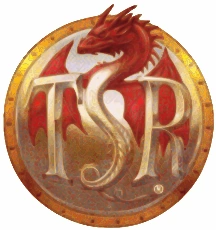
Wizards of the Coast Acquires TSR
At the end of 1996, TSR was struggling. They’d finished the year with almost no money in the bank and they were deep in debt. They were sitting on a ton of unsold stock in the form of unsold novels and sets of Dragon Dice, the collectible dice game they’d released a year earlier. They owed a shitload of money to Random House for returned unsold product and were starting to take on lawsuits from their freelancers. So in 1997 Lorraine Williams sold the company to Wizards of the Coast.
Wizards had a lot of cash on hand, thanks to Magic being a runaway hit and license to print money. They settled TSR’s debts, closed the company’s corporate offices, and settled things with the unpaid freelancers and former employees. Then they got to work producing a new edition of Dungeons & Dragons. We’ll come back to that in our writeup on the year 2000.
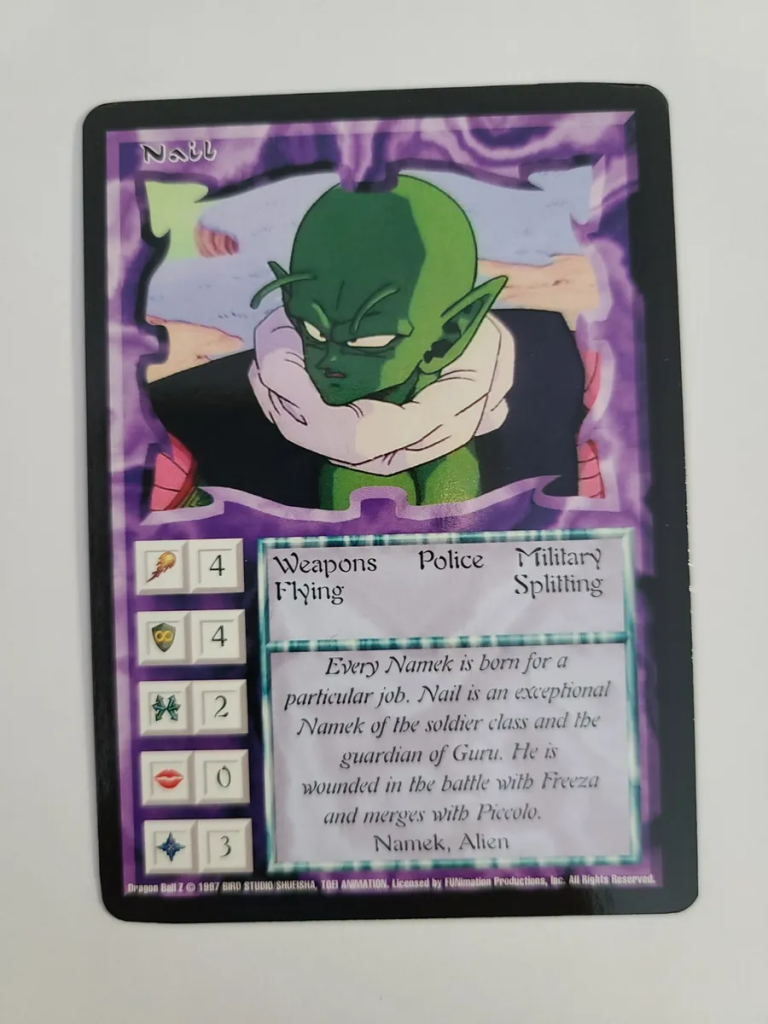
More CCGs Hit the Market
In 1997 there were still CCGs hitting the market but things had begun to slow. Many of those early games were starting to wind down – games like Ani-Mayhem really didn’t have a decade-long run in them – and companies were starting to realize that that the bubble was bursting. We’d still see games like Babylon 5, Aliens vs. Predator, Digimon, and Shadowrun in 1997, but none of these had much staying power.
Magic, on the other hand, continued to roll on, releasing its fifth edition core set and three expansions: Visions and Weatherlight completed the Mirage block, while Tempest, the first set to have Richard Garfield back as a designer, set off a new block looking to tell a more cohesive story through the cards for the first time in Magic’s history. They were all good sets and Tempest in particular produced a large number of very playable cards.
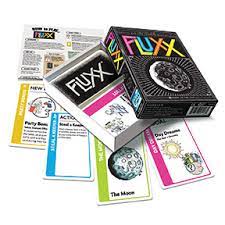
Fluxx
Andrew Looney’s Fluxx was published in 1997. It’s a game where the basic rule of the game is draw 1, play 1, and players can modify the rules using the cards from the deck, changing the game’s rules, goals, and taking actions. Fluxx is a great game to play when you have 10 minutes to kill and some friends who don’t want to spend a lot of time learning a new game. It’s perfect for throwing down a hand or two when it’s late night in the college dining hall.
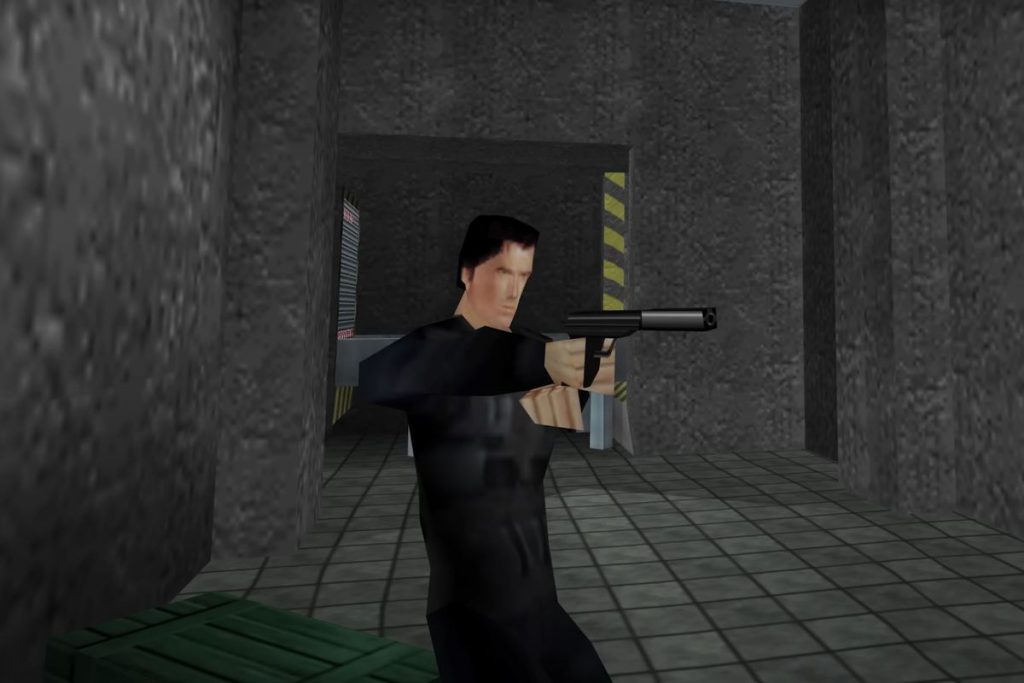
GoldenEye
Rare’s video game adaptation of the 1995 James Bond film was an instant classic on the Nintendo 64, giving players the first truly great console first person shooter. The game featured an outstanding campaign which followed the plot of the movie, with multiple difficulty modes offering increased challenges in the form of additional objectives per mission. Where the game truly shone, however, was the multiplayer – four-player split screen co-op matches of Goldeneye were about as much fun as multiplayer gaming got in 1997.
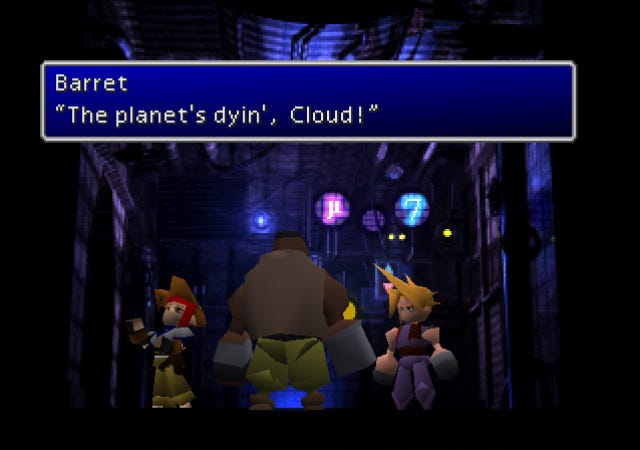
Final Fantasy VII
Squaresoft started work on Final Fantasy VII in 1994, right after the release of FF6. At the time, the game was planned as another 2D game for the SNES, but Squaresoft decided to instead focus on making a 3D game. For a time they looked at the Nintendo 64, even showing off a tech demo using 3D models of Final Fantasy VI characters but ultimately almost everything they wanted to do wouldn’t have been possible on the Nintendo 64 hardware and the space limitations of the console’s media would have further caused problems, requiring dozens of cartridges or 64DD discs to implement. And so in 1997 Squaresoft released Final Fantasy VII for the Sony PlayStation. And it was massive.
It’s hard to overstate how big a deal FF7 was. It was a monster release in Japan, selling more than two million copies domestically, and then hit 500,000 units moved in the US in fewer than three weeks. It brought the JRPG to a larger, more general audience than the genre had ever reached before – mainstream players who were previously turned off by cute cartoon sprites were suddenly very much on board for CGI cutscenes showing Sephiroth summoning a meteor to destroy the planet. The game’s epic story, phenomenal soundtrack, and solid gameplay also helped, and the game remains one of Squaresoft’s best selling games of all time. It’s an easy all-timer, and at the time of this writing the second part of its remake trilogy is one of 2024’s biggest releases.
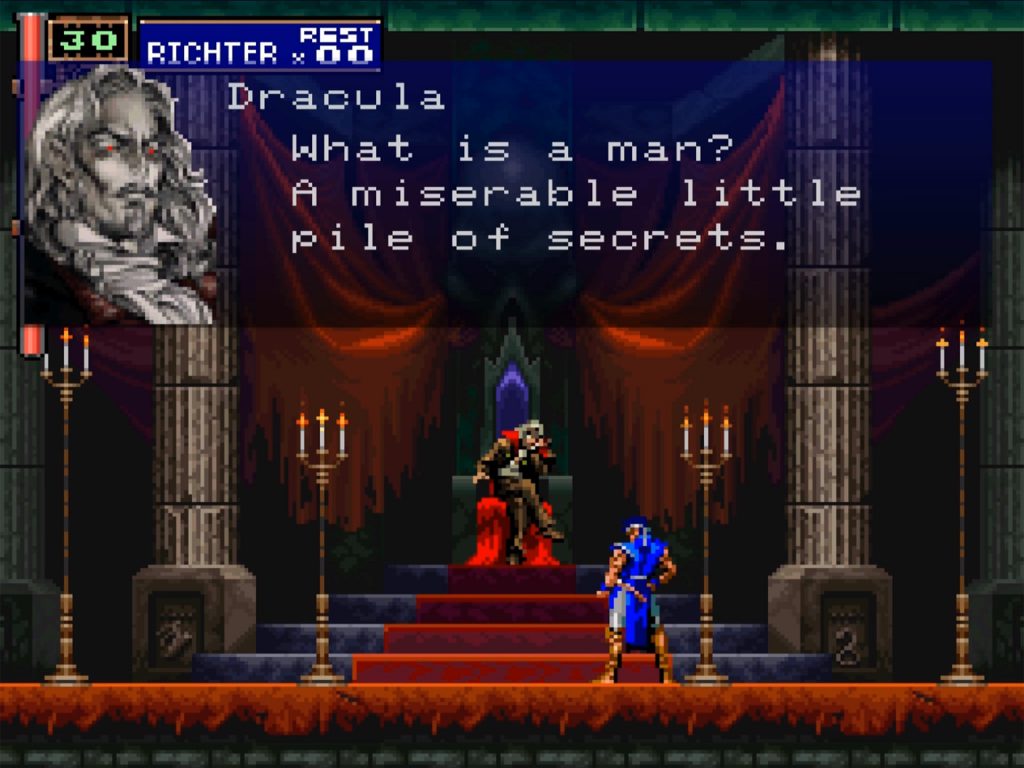
Castlevania: Symphony of the Night
A game so good it caused everyone to lose their minds and shoehorn its name into the Metroidlike genre, Konami released this sequel to Castlevania: Rondo of Blood in 1997. A 2D, sprite-based adventure game with RPG elements, Castlevania: Symphony of the Night has players take on the role of Dracula’s son, Alucard, as he returns to Castlevania to stop his father’s rebirth at human hands. The game featured a massive map with tons of rooms and cool effects, and it’s an incredibly engaging game which has aged very well.
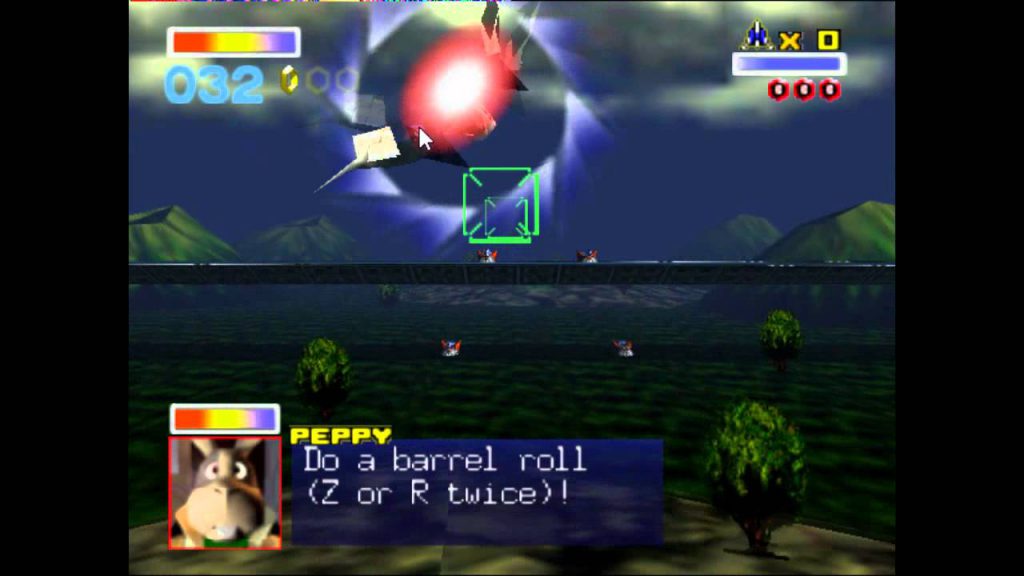
Starfox 64
With very little third party support for the Nintendo 64, Nintendo was basically on the hook to deliver at least one game of the year nominee every year for the N64 and they pretty much delivered. In 1997, Starfox 64 was their attempt, a rail shooter which served as equal parts remake and sequel to the 1993 original.
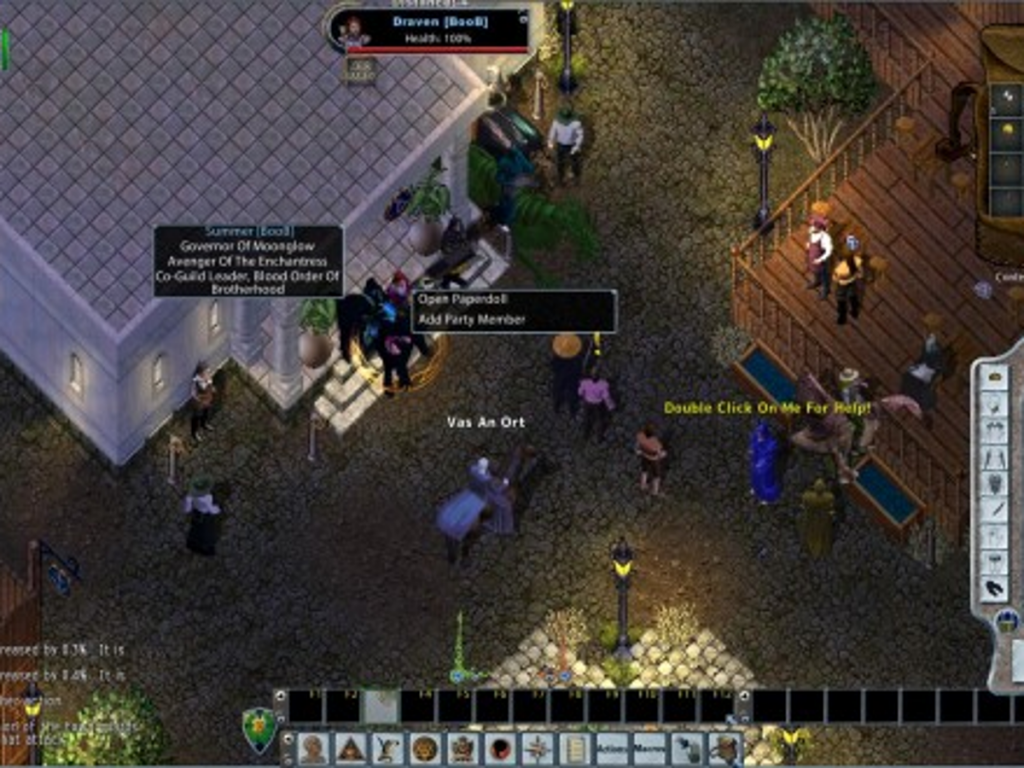
Ultima Online
Neverwinter Nights might have been the first MMO, but Ultima Online was the first game to really popularize the concept, putting players into a massive open world the likes of which hadn’t been seen before. It was a wide open experience with mass appeal – by 2001, nearly a third of the game’s players were women – and after a slow start the game continued to gain steam and increase in popularity (and sales). It was the first MMO to reach 100,000 players and maintained a pretty open policy toward giving players the freedom to be evil shitheads.
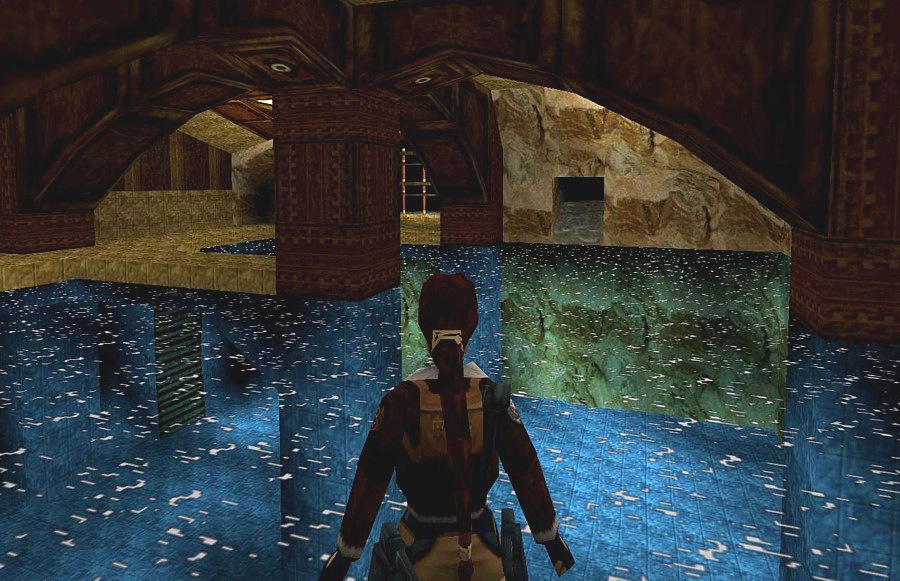
Tomb Raider 2
One year after Lara Croft’s debut in the original Tomb Raider, the sequel released on Windows and the PlayStation. It did everything the first game did but better, adding some great vehicle sequences, more locations, and bigger enemies, including a T-Rex at one point.
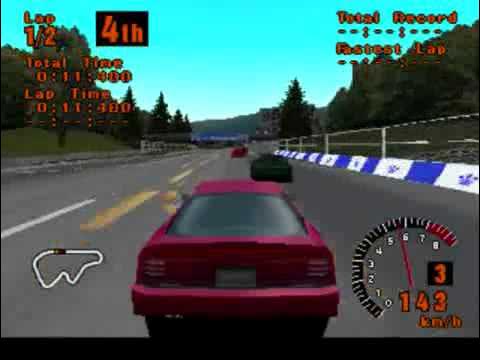
Gran Turismo
Sega had been the undisputed king of racing games throughout the Eighties and Nineties, releasing massively popular titles like Out Run, Virtua Racing, and Daytona USA. That all changed in 1997 when Sony published the first Gran Turismo for the PlayStation. The original Gran Turismo was a much more sim-like racing game than Sega’s arcade games, featuring a massive roster of real cars and tracks
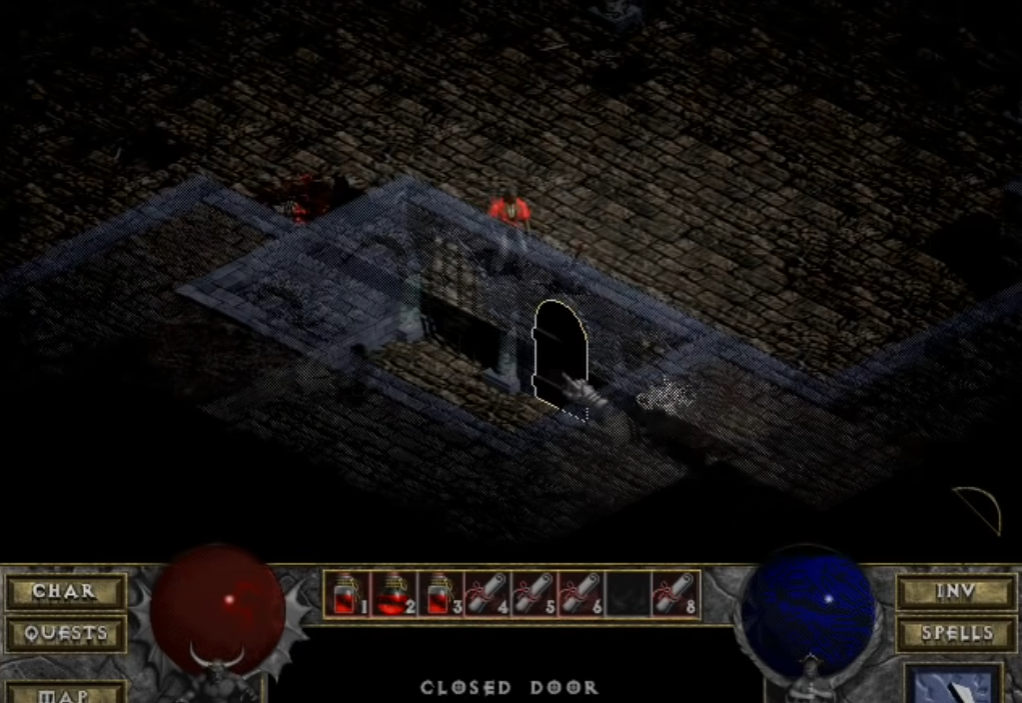
Diablo
Blizzard reinvented the action RPG with this top-down dungeon crawler in which players take on the role of an adventurer journeying into the depths of the dungeon beneath the town of Tristram in search of the demon Diablo. The game featured randomly generated dungeons and an addictive loot structure, making it endlessly replayable. The game’s biggest advantage however was the game’s integration with Battle.net – using Battle.net players could connect and party together, form guilds, and square off in one-on-one combat. The Battle.net server quickly became the most important multiplayer server on the internet. Diablo was supposed to release in December 1996, but would end up being delayed to January 1997.
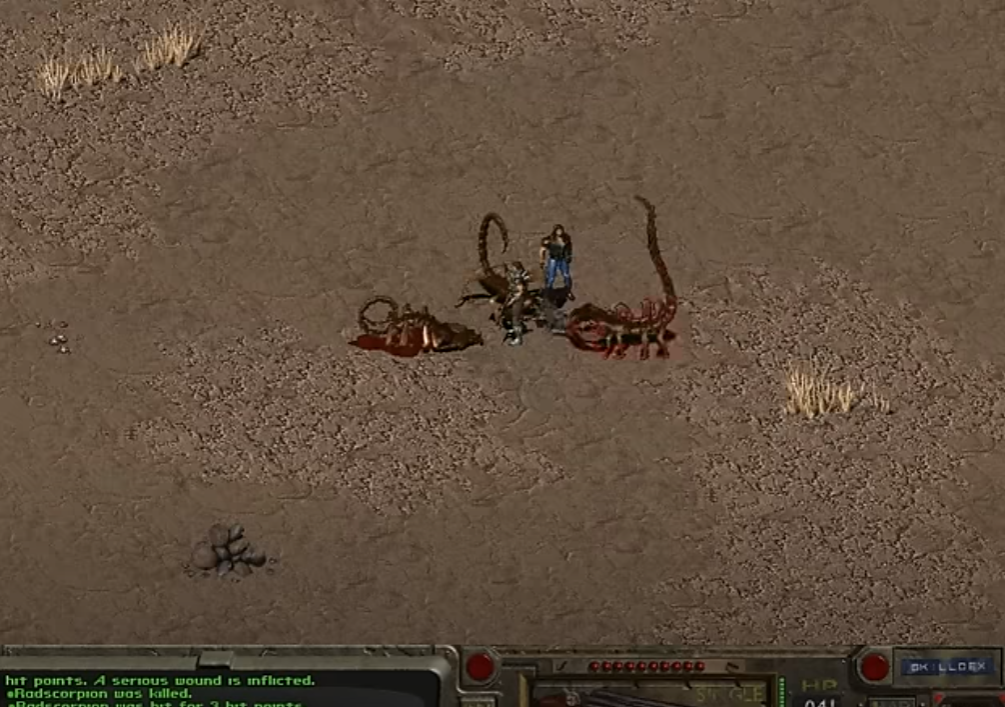
Fallout
Interplay Entertianment’s 1997 role-playing game is a masterpiece, one of the all-time great games and the game which single-handedly popularized the conceptual framework and differences of the American RPG from the JRPG. Players take on the role of a nameless vault dweller, emerging from their underground fortress after a massive nuclear war, and roam the irradiated deserts in search of a water chip to save their vault. Fallout‘s wonderfully imaginative and open-ended, giving players tons of ways to approach problems and explore the world. It’s one of the greatest games ever made.
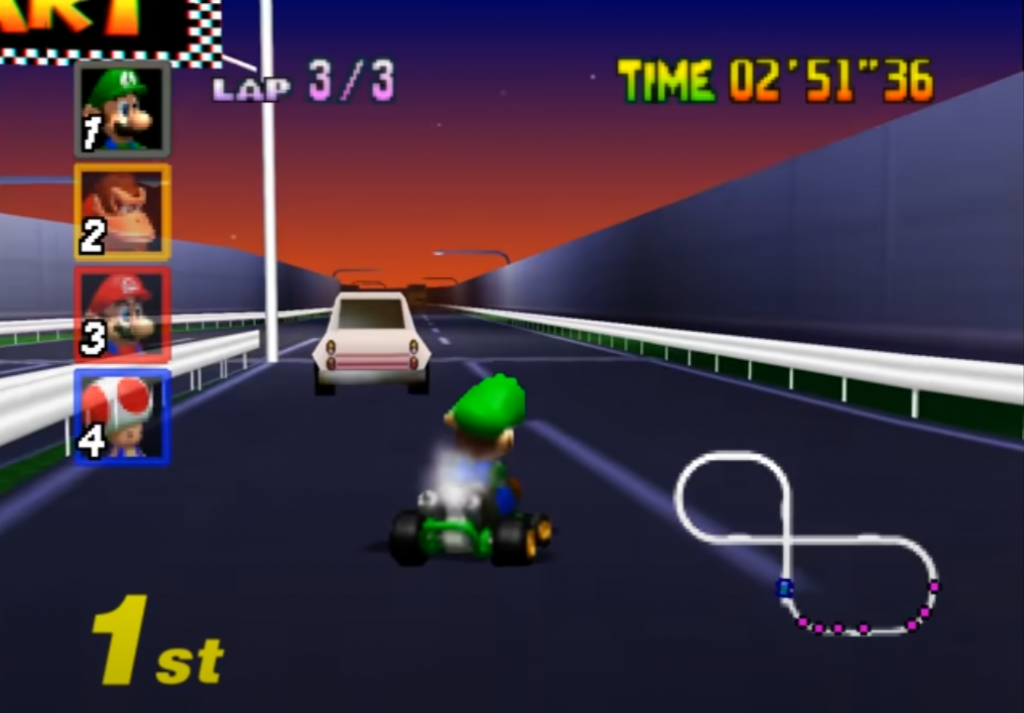
Mario Kart 64
The other half of Nintendo’s first-party title pair in 1997, Mario Kart 64 set new standards for the series and immediately became an amazing party game. Great character selection, great tracks, and fast, fun gameplay make this a stand-out game and one of the stronger entries in the series. The game technically released in mid-December 1996 in Japan, but we’re bumping it to 1997 as that’s when it released everywhere else.
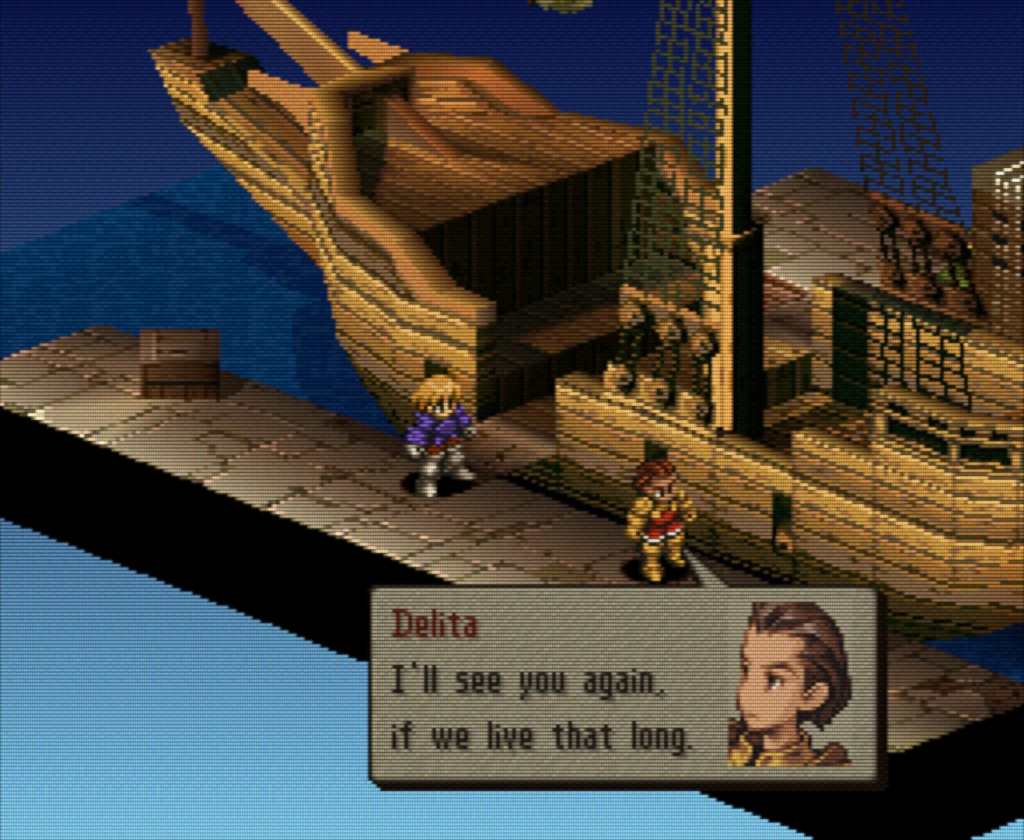
Final Fantasy Tactics
Square’s other big RPG from 1997 was this Ogre Tactics-like take on Final Fantasy, featuring a return of the class system from FFIII/FFV and one of the strongest, most grounded plots seen in a Final Fantasy game.
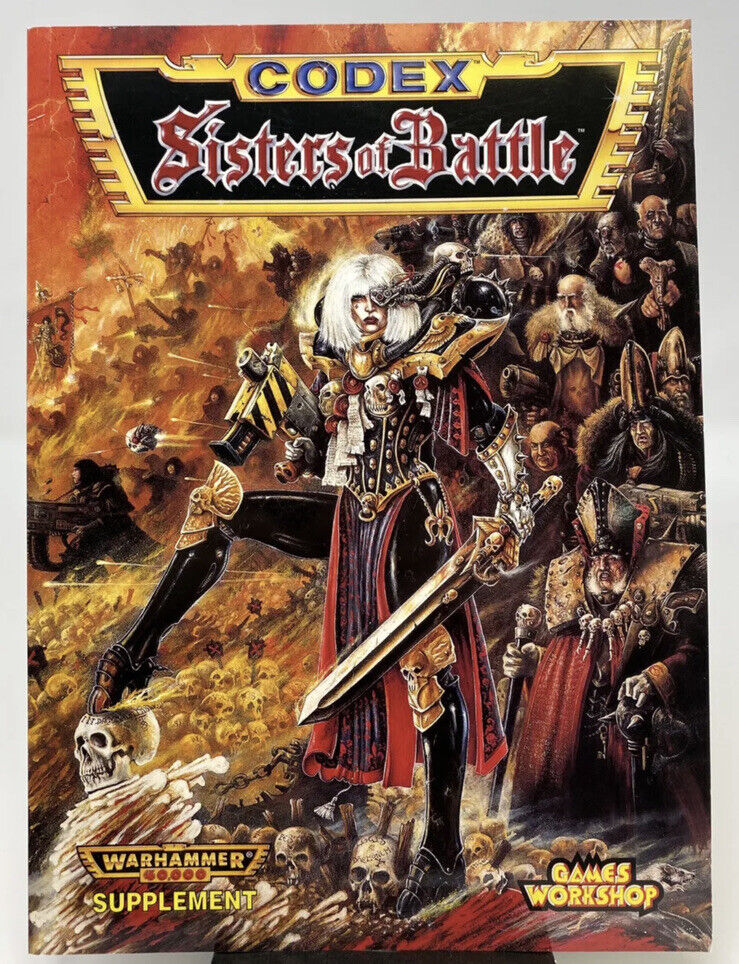
Codex: Sisters of Battle
Games Workshop introduced a new faction to the game with this 1997 Codex – the Adepta Sorortias are zealous warriors of the ecclesiarchy, powered in battle by miracles wrought from their faith. Codex: Sisters of Battle introduced them to the game as a faction for the first time.
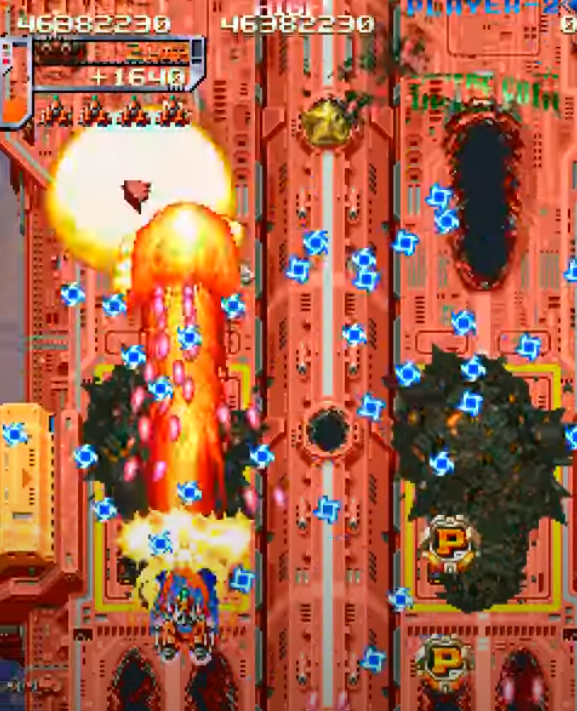
Do DonPachi
Atlus’ DonPachi in 1995 practically invented the bullet hell shooter and this vertically scrolling sequel two years later brought a ton of new gameplay elements to the shooter genre, with transforming ships and power-up modes. It’s considered one of the best shooters ever made.
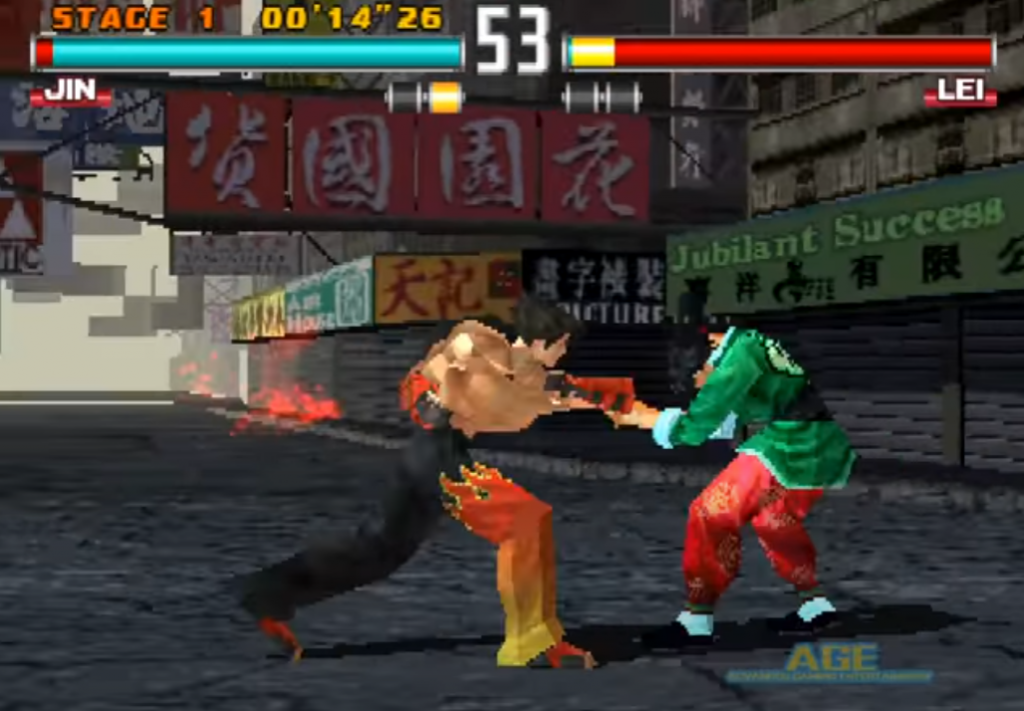
Tekken 3
Considered by many to be the high point of the series, Namco’s Tekken 3 hit arcades in 1997 with what was at the time mostly new characters. That’s because in the bonkers story of the game, Tekken 3 takes place 20 years after Tekken 2. This is a thing many people, including myself, did not realize, in part because the game’s protagonist is Jin Kazama, who basically just looks exactly like his dad, Kazuya.
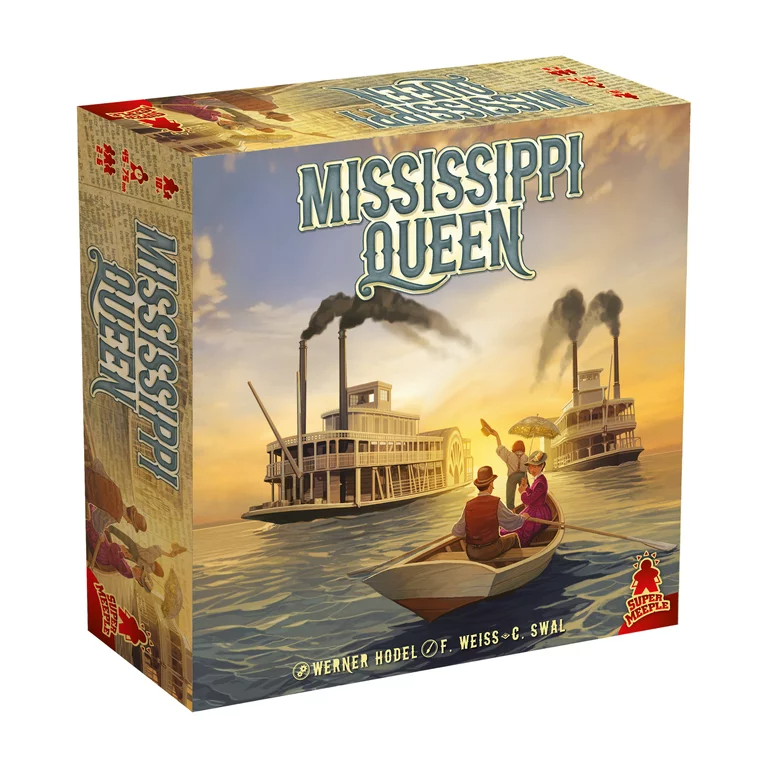
Mississippi Queen
The 1997 Spiel des Jahres winner, Mississippi Queen is a racing game—but it’s a racing game where you are racing large, slow moving paddle wheelers. This is just one of the things that’s so great about Mississippi Queen: you’re racing things that weren’t really designed for racing. You’re trying to get your paddle wheeler down the Mississippi first, but, in order to win you have to pick up two passengers along the way. This means you have to slow down to pick up passengers and speed back up. So, it’s a racing game, where you’re racing things that you shouldn’t race, and you need to slow down to a near stop twice.
Mississippi Queen is one of those games that’s greater than the sum of its parts. It’s tense, it produces a lot of laughs, and your best laid plans can fall apart at a moment’s notice when your boat crashes into a sandbar or some floating logs.
Special thanks to Tim Fowler for contributing the Mississippi Queen write up.
Why It Was the Best Year in Gaming
1997 has a powerful lineup of games. It’s a year which sports Final Fantasy VII and Final Fantasy Tactics, two of the greatest JRPGs ever made, plus the original Fallout and Diablo, making it a tremendous year for RPGs, and that’s before you add Grandia, Tales of Destiny, and Mega Man Legends to the mix. On the first person shooter side of things you have GoldenEye, one of the best multiplayer experiences ever devised. And Symphony of the Night was every bit as good as the hype for it deems it to be.
I’ll go to bat for the tabletop side of 1997 as well – Tempest is one of the best Magic sets ever printed, full of great card concepts and with Visions and Weatherlight, gave us a block where creatures were finally starting to be appropriately costed and the concept of card advantage was finally being understood. It was a wonderful time to be playing magic, both casually and competitively. And Codex: Sisters of Battle wasn’t quite the game changer for 40k it seemed like it could be, but it did give us an entirely new, interesting faction in the game.
In all that’s a ridiculously stacked line-up and if 1997 loses, it’ll be because 1998 gave us an even more insanely stacked year – one of the biggest in the history of gaming.
This article is part of a larger series on the best year in gaming. For more years, click this link. Have any questions or feedback? Drop us a note in the comments below or email us at contact@goonhammer.com.
